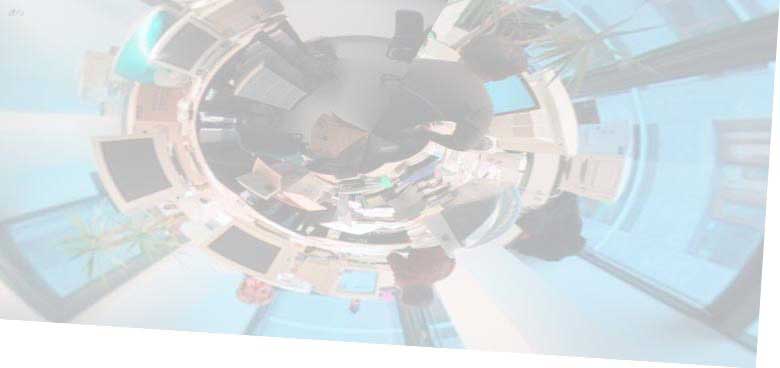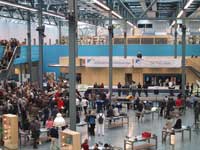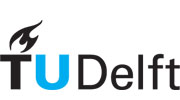Expressive Human Hand Simulation
Main motion space boundary
Clenching: abducted motion via Large Grasp to Fist

|

|

|
animation
Clenching
When all fingers in extension are abducted (from the Long finger) all kinds of power grips can be made. When the abducted hand is closed fast it is easier / faster to form a Fist than the "Cage" with adducted fingers (see "Containing").
Eight action parameters are animated.
|
snapshot
Fist
In the Fist all joints are not fully flexed: they are dynamic to widstand forces evoked by the body behind it and / or applied by forces from outside.
|
snapshot
Fist
The Fist expressing power for defence and attack. On a raised arm an individual can express winning a competition or socially symbolize protest.

snapshot
Large Grasp
All fingers are abducted from the Neutral position preparing the hand for holding the largest possible objects.
|
Complementary motion space boundary
Containing: adducted via Cup to Cage

|

|

|
animation
Containing
When all extended fingers are adducted after which the hand is closed by fast flexing all fingers it is easier / faster to form a Cage than a Fist.
Ten action parameters are animated.
|
snapshot
Cage
All finger joints are at the end of their range and all phalanges, together with those of the thumb, enclose a box to catch and hide small objects. E.g. insects that are catched and eaten by more than half of the worlds population.
|
snapshot
Cage
Typical wharped pattern of adducted top phalanges adjoined to the Palm making the Containing space.

snapshot
Cup
The fingers are adducted from the Neutral position:
- to prepare the hand to contain water, heaving and drinking with the chin pressed to the side of the Palm,
- or to express the classical symbolic sign for charity: the plea for receiving alms.
|
Motion space between boundaries
Opposition-Apposition: motion of all fingers including the palm

|

|
animation
Opposition
Thumb and Index: Pinch
The mirrored motion of thumb and fingers allows for this precision grip and hold of the smallest of objects and forms the epithomy of all grasping motions. Being at the center of the motion field it can be initiated from Neutral position but from the Large grasp as well. We animated it as if, in the action, the intention shifts from a power to a precision grip. In the, control driven, western world the Pinch symbolizes O.K.; affirming or rewarding a well ended action, expressing: "Good, all under control".
Ten action parameters are animated.
|
animation
Apposition
Thumb to Palm
When opposing the thumb towards the palm the palm folds i.e. the metacarpals of Index and Long finger move backwards and the metacarpals of Ring and Little finger move towards the center of the Palm: allowing the hand to explore narrow spaces.
Three action parameters are animated.
|
|
Segment motion on joints: ovoid, conical and circular
Ovoid ('egg' shaped) segment motion
Conical and Circular segment motion

|

|
|
Conical segment motion:
animation with our NJA
The segment axis describes a cone as natural rotational axes are never perpendicular to the former and the proper segment axis. So all joints in the human hand have, in extension-flexion, conical segment motions on them, causing the typical motion pattern and closing postures as shown in the Taxonomy and several animations.
One action parameter is animated.
|
Circular segment motion:
animation with single LCS
The animation shows the usual unnatural extension-flexion motion of common hand models when they have single LCS' for joints.
Circular segment motion can very well simulate adduction-abduction segment motion on the fingers knuckles (not shown). We operationalized this with the same two methods we used on ovoidal motion by applying them to the elliptical lateral sections of the articulate joint surfaces of the meta carpal phalangeal joints.
|

Posture comparison of Single LCS to NJA: composed snapshots
The eight postures of the Taxonomy are the core to all natural motion capabilities of the human hand. If the settings of and between NJA are unjust, some postures will be right, some others will be unnatural. To demonstrate this we compare three sets of three postures of the Containing motion. Two sets (a and b) are made with the mostly used single LCS (only circular motion) and one set (c) with the NJA. The two sets with single LCS demonstrate that getting pairs of postures in natural poses (only a1-2) is almost impossible and natural sets of three only are possible with the NJA (c1-2-3).























